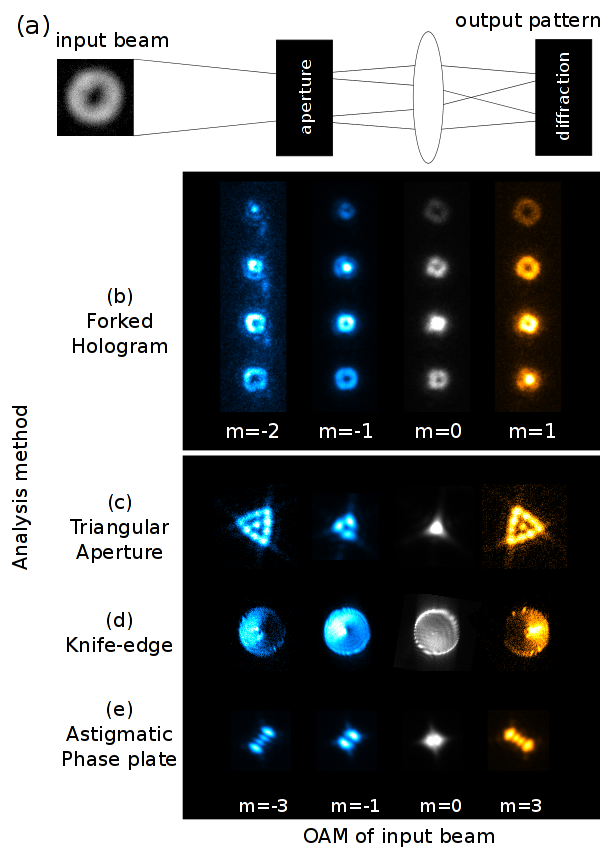IT-1-P-1500 Measuring the Orbital Angular Momentum of Electron Vortex Beams in the TEM
The exchange of orbital angular momentum (OAM) in the interaction between an electron beam and a sample is determined by the properties of the sample and the beam [1,2]. Studying this interaction could enable a new class of OAM based microscopy techniques if convenient measurement of OAM exchange would exist. These techniques could then be used to study in the TEM, among others, the magnetic state of atoms and the transfer of OAM nanoparticles.
Electron beams possessing intrinsic orbital angular momentum have recently risen to attention after the prediction and demonstration of electron vortex beams[3-5]. This discovery has led to the rapid development in the field of singular electron optics [1-7].
In order to employ electron vortices as a probe to study the OAM exchange between a beam and a sample, methods to manipulate or measure the OAM of the beams are fundamentally important. While several methods have been designed to produce vortex beams, there has not been an equal progress in the detection and measurement of intrinsic OAM in the electron microscope.
Aiming to bridge this gap, we have implemented several diffraction based OAM measurement methods: using a forked grating hologram, a triangular geometrical aperture, a knife-edge and an astigmatic phase plate. Fig.1 shows an overview of the experimental results of the different methods when different incoming vortex beams are used as input.
In particular the triangular aperture and the astigmatic phase allow to recognize high order vortex beams easily , but they require to record and analyze a full 2D diffraction pattern. Intentional astigmatic aberration is easier to implement but the OAM is revealed by observing the beam waist rather than the far field pattern which may be a disadvantage in scanned electron probe setups.
On the other hand the hologram and the knife-edge are only appropriate for the measurement of lower values of OAM, but they allow the measurement to be reduced to a simple electron counting process which makes them ideally suited for automated OAM measurement [7].
[1] P. Schattschneider et al., Phys. Rev. B 85, 134422 (2012).
[2] A. Béché et al., Nat. Phys.10/1 26 (2013).
[3] K. Bliokh et al., Phys. Rev. Lett. 99 190404 (2007).
[4] M. Uchida and A. Tonomura., Nature, 464/7289 737 (2010).
[5] J. Verbeeck et al. Nature 494, 331–335 (2013).
[6] V. Grillo et al., Phys. Rev. X 4, 011013 (2014).
[7] G. Guzzinati et al., Phys. Rev. A 89, 025803 (2014).
We acknowledge funding from the European Union under the FP7 program, ERC Starting Grant No. 278510 VORTEX and Integrated Infrastructure Initiative No. 312483 ESTEEM2.
